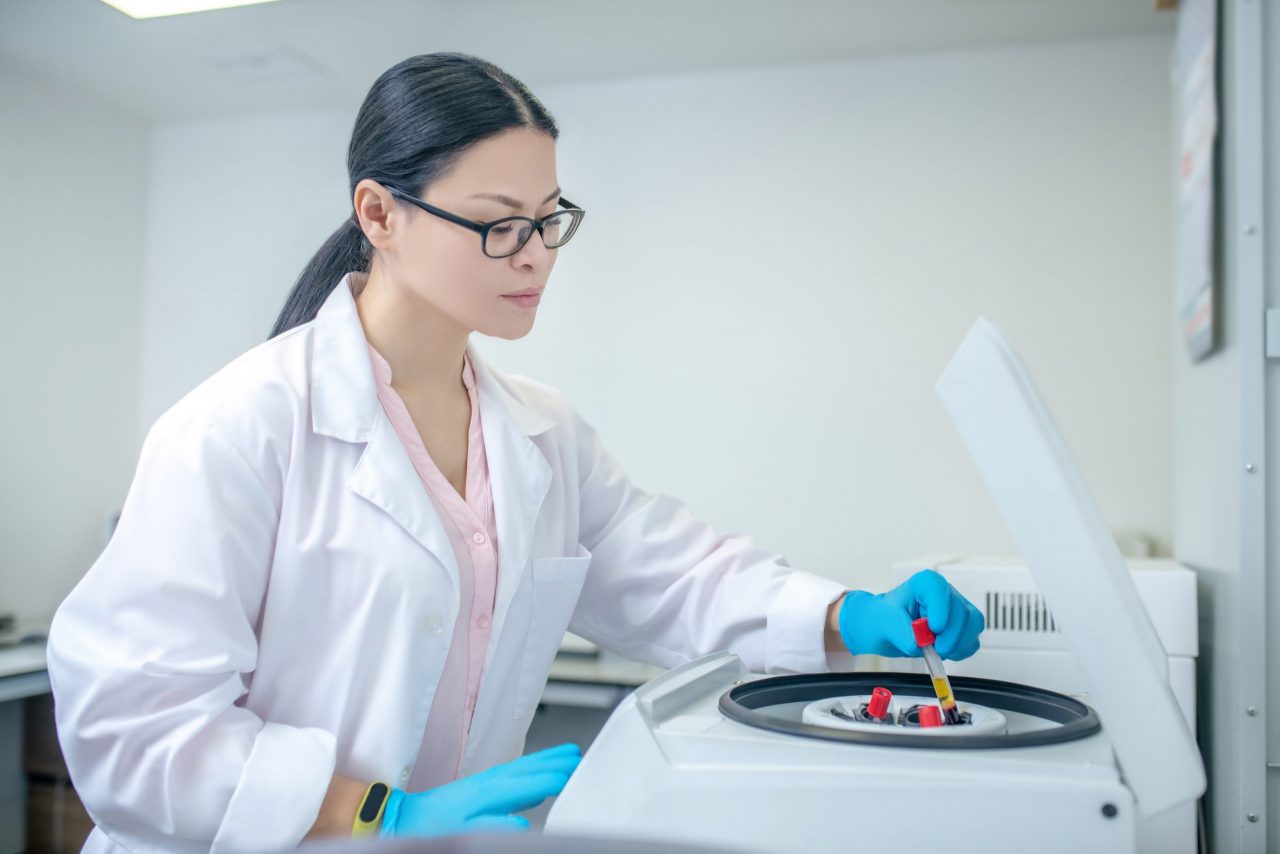The ultracentrifuge is an equipment intended for the separation of particles with a low sedimentation coefficient (microsomes, viruses, macromolecules). The maximum speed it reaches is 100,000 rpm or 802,000 xg, so it has auxiliary cooling and high vacuum systems.
This equipment is designed to rotate an object around a fixed axis while applying a perpendicular force. Ultracentrifugation is carried out at a speed greater than 20,000 rpm and is used to separate tiny particles from each other to determine their sizes and molecular weights. It is also widely used to study high polymers, particularly proteins, nucleic acids, viruses, and other biological macromolecules.
Types of ultracentrifuges
There are preparative and analytical ultracentrifuges, both of which are used in polymer science, biochemistry, and molecular biology.
A preparative ultracentrifuge is used to isolate specific particles for reuse. It is considered to be a high-performance instrument that is reliable and efficient, and works quickly and quietly. It features a variety of rotors that are suitable for a wide range of separation tasks used in cell biology, biochemistry, and molecular biology. A sample can be spun at a high speed until its components separate, which can then be isolated. Most ultracentrifuge setups include automatic rotor life management, a color LCD screen, and positive feedback capabilities.
Analytical centrifugation is a widely used biomolecular research technique that measures the physical properties of sedimenting particles and how they behave in solution. Theodor Svedberg invented analytical ultracentrifugation and won the Nobel Prize in Chemistry for his research on it. In this type of ultracentrifuge, a sample is centrifuged in a cell, and an optical system projects an image of the cell onto a computer or on film in real time. The most common types of analytical ultracentrifuge experiments are those on sedimentation rate and equilibrium, which provide information on the shapes, sizes, and conformational changes of macromolecules.
The vacuum ultracentrifuge was invented by Edward Greydon Pickels. His contribution with the contribution of the vacuum was what allowed a reduction in the friction generated at high speeds. Vacuum systems also allowed the maintenance of a constant temperature.
At Kalstein we are MANUFACTURERS and we put at your disposal innovative ultracentrifuges, designed with the best technology and quality standards at the best PRICES on the market. Our ultracentrifuges provide superior quality, reproducibility and reliable performance.
They are ideal kits for applications such as high purity plasmid DNA isolation. Lipoprotein purification and virus isolation. They operate with a wide range of rotors, including zonal and continuous flow for high volume separations and with a quiet technique. Speed from 80,000 to 100,000 rpm. That is why we invite you to take a look at the HERE

